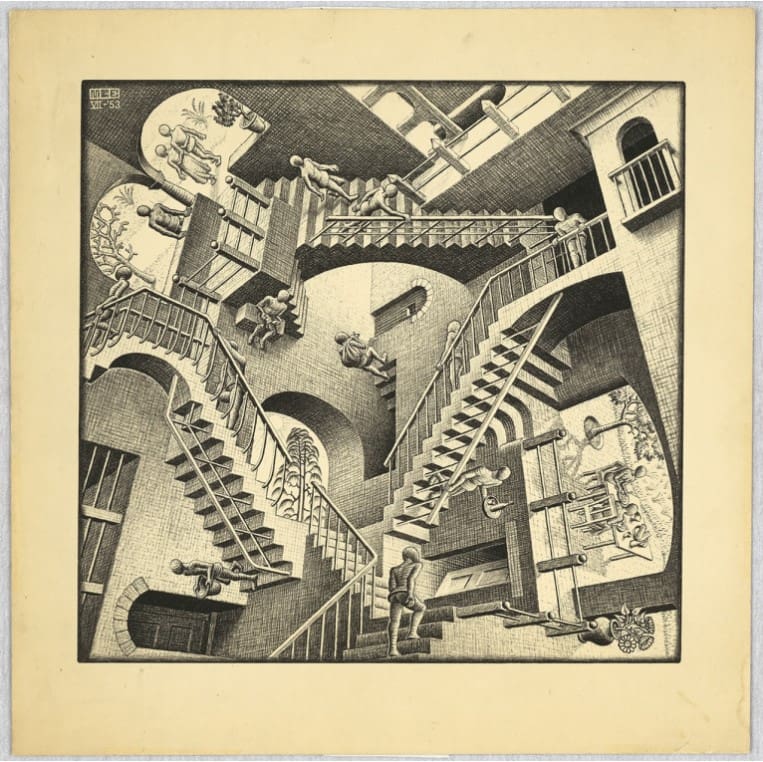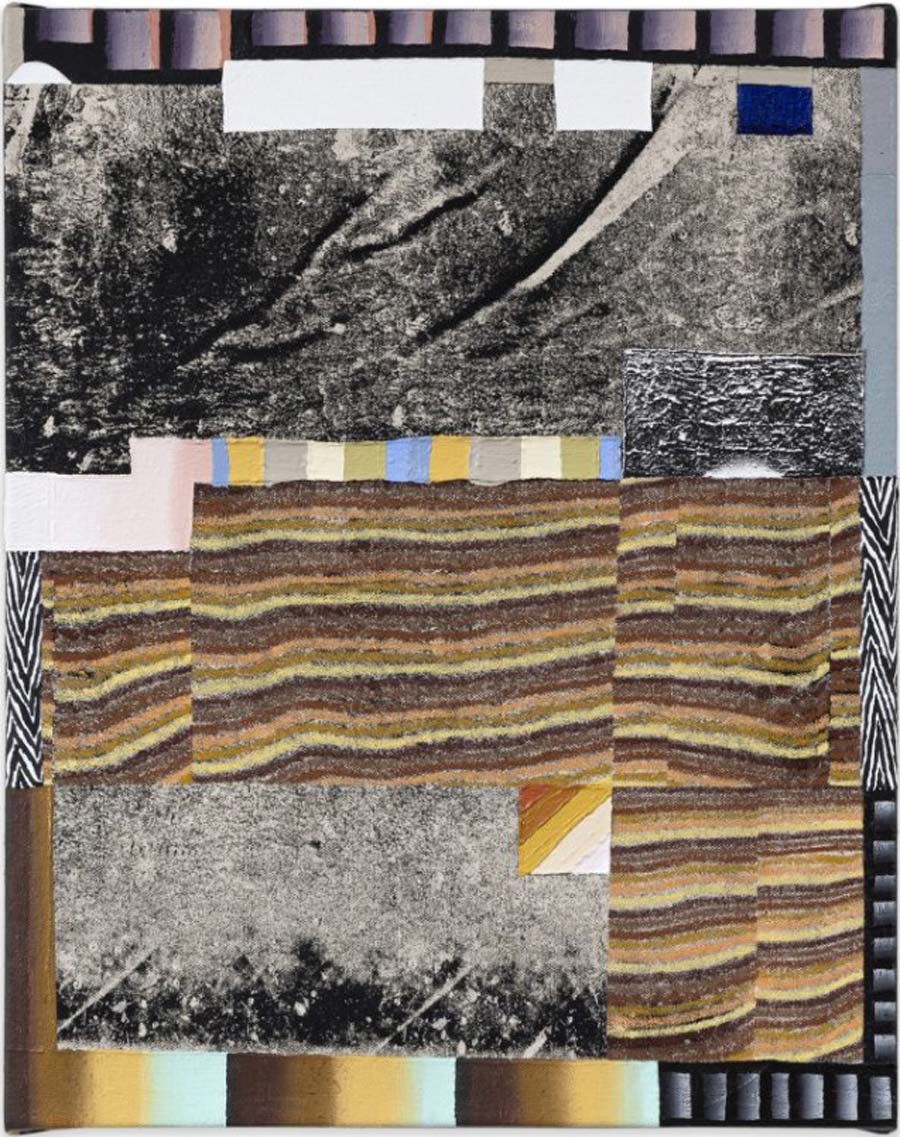Featured image: M.C. Escher, “Relativity” (1953), lithograph, 10 9/10 x 11 1/2 inches
Alongside Monet’s water lilies and van Gogh’s swirling night sky, the telescoping staircases and precise forced perspectives of M.C. Escher are some of the most identifiable motifs in the Western art canon. Escher, a new book edited by Mark Veldhuysen and Federico Giudiceandrea and published by Skira, is a densely illustrated compendium of the artist’s life work. While it includes some of his greatest hits, it also brings to light lesser-known and previously unpublished pieces from his oeuvre.
The book traces the Netherlands-born Escher from his origins through his education and the actualization of his unique vision, culminating in the “Eschermania” that has preserved and proliferated that vision. Work made during his years post-schooling is given particular focus, rooting his obsessions with precise geometries, puzzle art, tessellation, and paradox in his early life in the 1920s, which was also a deeply influential time in Italy.
Read the original article here… and return to share your thoughts below.










